Hairballs are a common concern among cat parents, often raising questions about their nature, frequency, potential harm, and management strategies. Hairballs in cats are almost unavoidable if you have a purrball. So, let’s find out what is normal and what’s concerning for your feline’s health.
What Are Hairballs in Cats?
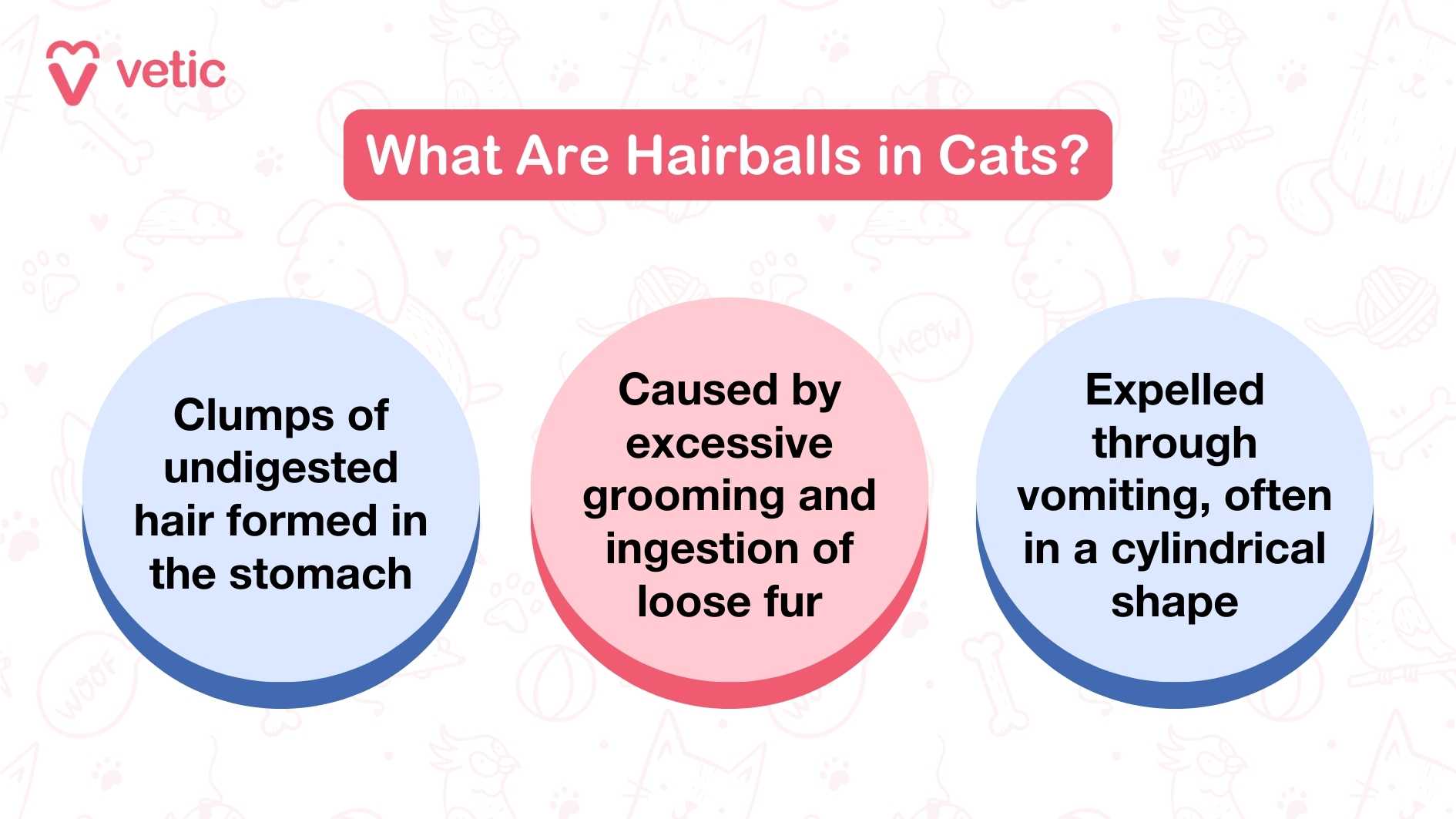
Cat hairballs, scientifically known as trichobezoars, are wads of undigested hair that accumulate in a cat’s stomach.
Cats are meticulous groomers, using their tongues to clean their fur, which leads to the ingestion of loose hairs. While most of this hair passes through the digestive tract and is excreted, some may remain in the stomach, binding together to form a hairball.
Eventually, cats expel these hairballs through vomiting. Contrary to their name, hairballs are typically cylindrical due to their passage through the esophagus.
How Are Hairballs in Cats Different from Vomiting?
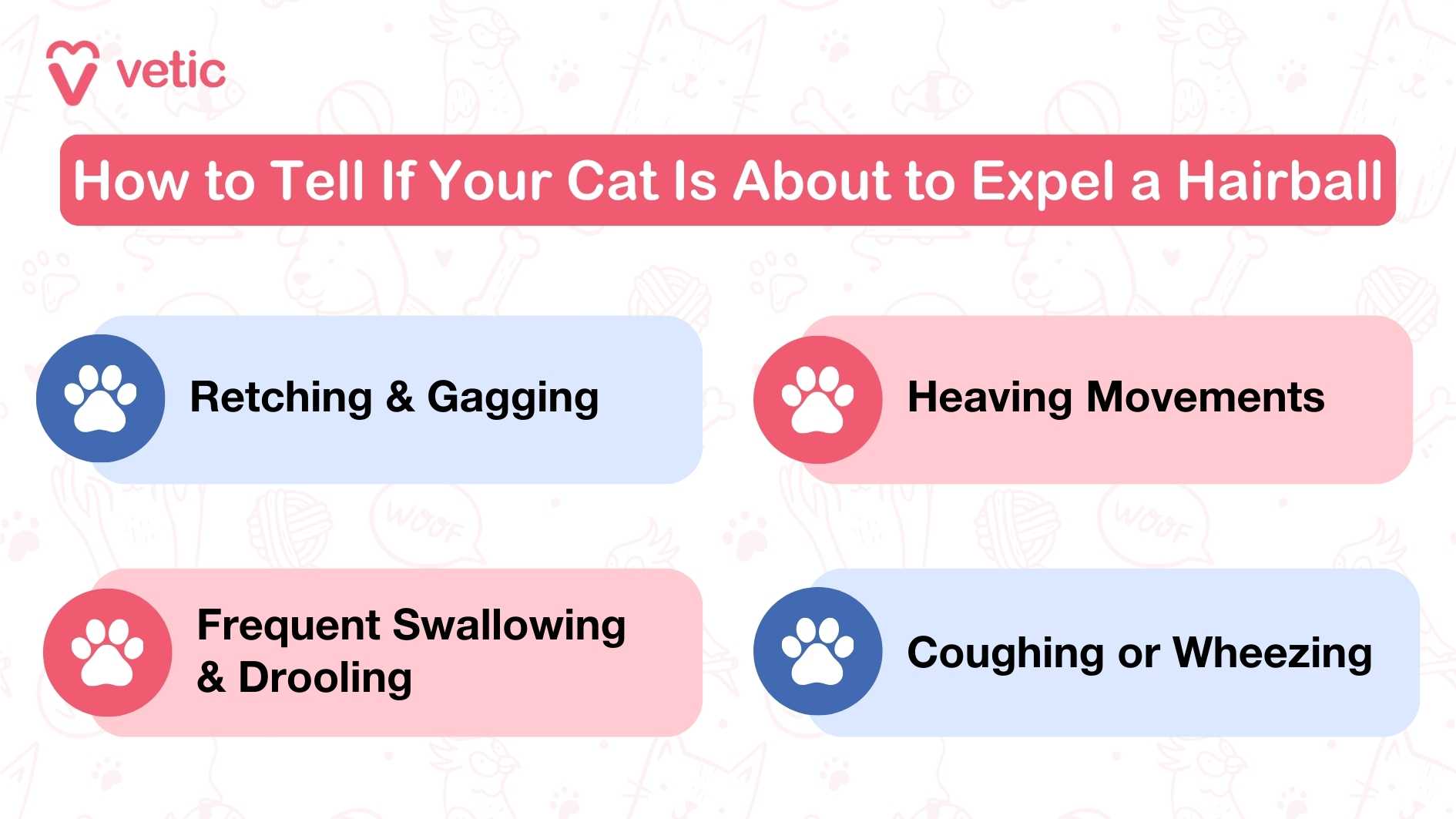
Distinguishing between hairballs and vomiting is crucial for cat owners.
When a cat expels a hairball, it often exhibits behaviors such as retching, gagging, and hacking, culminating in the ejection of a tubular mass of hair.
In contrast, vomiting involves the expulsion of stomach contents, which may include undigested food, bile, and other materials, and is usually not accompanied by a hair mass.
Frequent vomiting, especially without the presence of hair, may indicate underlying health issues and warrants veterinary attention.
How to Understand If Your Cat Is About to Throw Up or Throwing Up a Hairball?
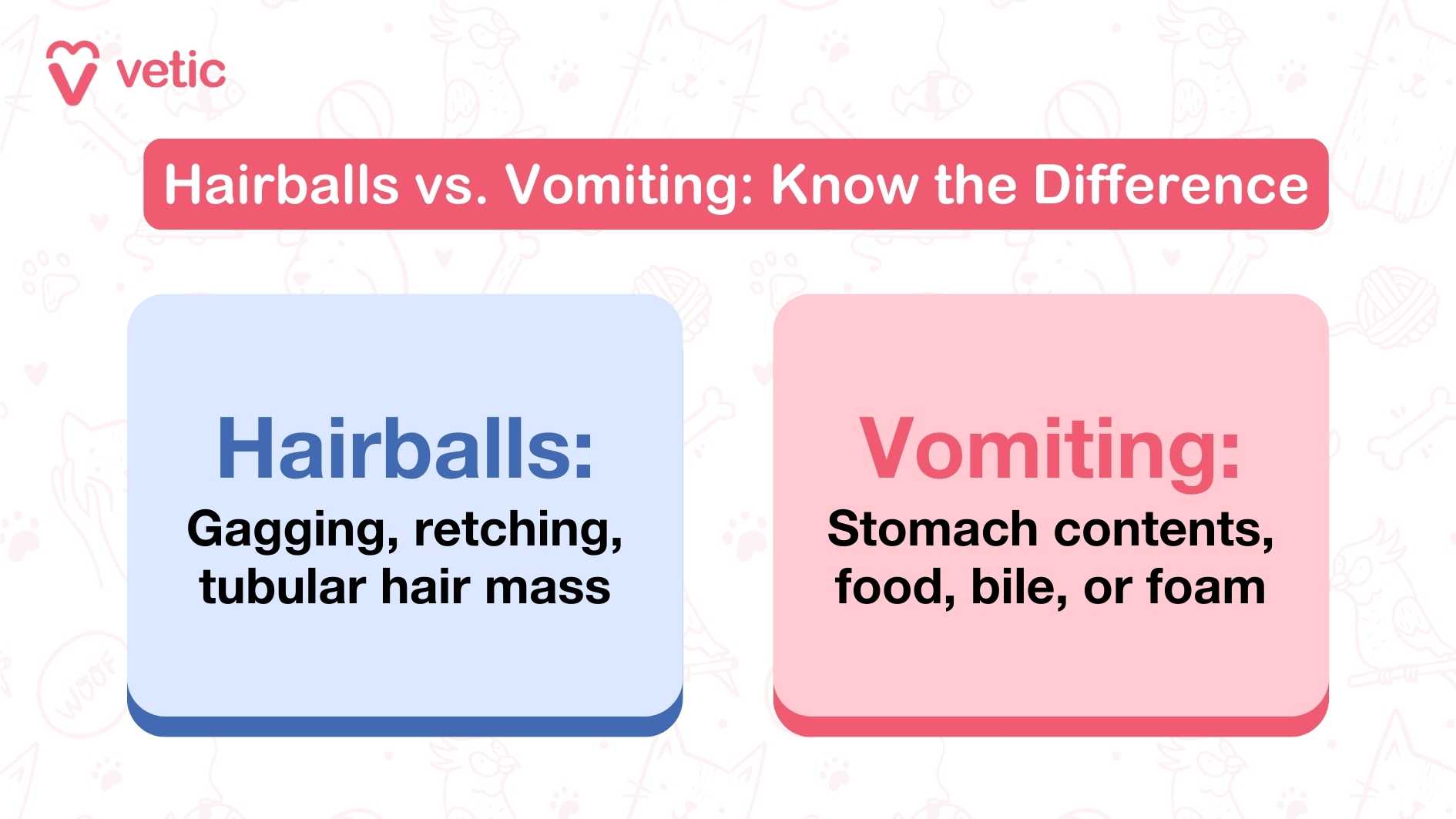
Recognizing the signs that your cat is about to expel a hairball can help you respond appropriately. The symptoms of hairball regurgitation are different from those of general vomiting.
Signs Your Cat Is About to Expel a Hairball:
- Retching and Gagging: Your cat will make repeated hacking or gagging sounds, often lowering its head and extending its neck.
- Heaving Movements: Visible contractions in the abdomen as the body tries to push the hairball out.
- Frequent Swallowing: Excessive licking of lips and swallowing, indicating discomfort in the throat.
- Coughing or Wheezing: A dry cough or wheezing noise may occur if the hairball is stuck in the esophagus.
- Drooling: Some cats drool before expelling a hairball due to nausea.
Signs Your Cat is Vomiting and Not Expelling a Hairball
- Presence of Hairball: When a hairball is expelled, you will see a cylindrical mass of fur, whereas vomiting usually contains undigested food, bile, or foam.
- Different Sound Patterns: Hairball expulsion often involves loud hacking or gagging, while vomiting tends to be quieter, with occasional retching.
- Frequency: Hairball-related episodes occur occasionally, whereas frequent vomiting may indicate an underlying illness.
If your cat struggles to expel a hairball but fails to do so, or if it shows signs of distress, lethargy, or loss of appetite, consult a veterinarian promptly.
Are Hairballs in Cats Normal? If So, Then at What Frequency?
Occasional hairballs are considered normal in cats, particularly those with long hair or during shedding seasons.
However, there is no definitive “normal” frequency, as it varies among individual cats. Some may rarely experience hairballs, while others might have them more regularly.
If a cat is producing hairballs more than once or twice a month, it may be indicative of excessive grooming or other health concerns, and consulting a veterinarian is advisable.
How Can Hairballs in Cats Be Harmful?
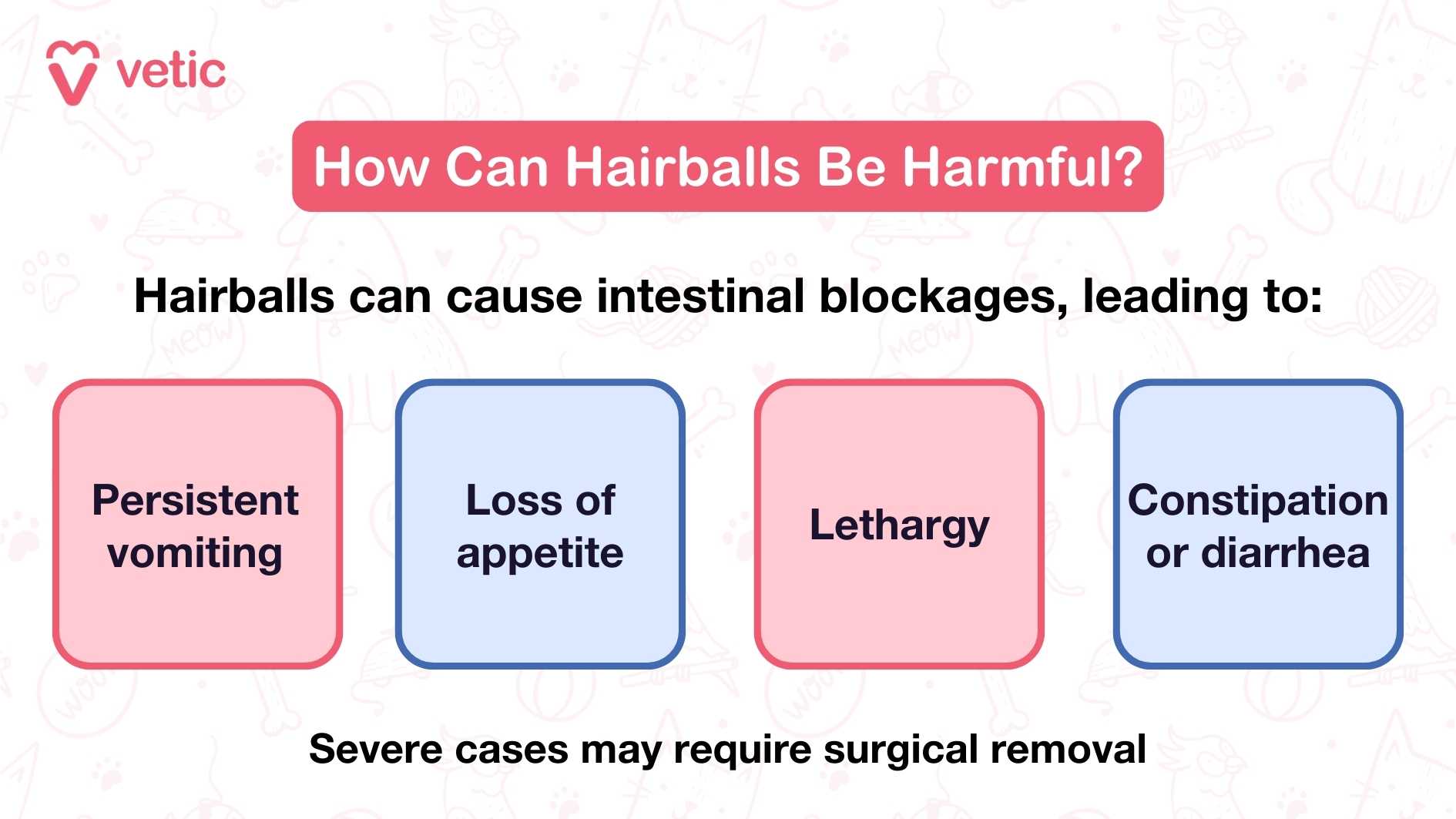
While often harmless, hairballs can pose significant health risks if they lead to gastrointestinal blockages.
A large clump of ingested hair can obstruct a cat’s intestinal tract, causing symptoms such as persistent vomiting, lethargy, loss of appetite, and constipation.
In severe cases, surgical intervention may be required to remove the obstruction. Therefore, monitoring and managing hairballs is essential to prevent potential complications.
How Can a Pet Parent Prevent Hairballs in Their Cat?

Preventing hairballs involves several proactive measures:
- Regular Grooming: Brushing your cat frequently helps remove loose fur, reducing the amount ingested during self-grooming. Long-haired breeds may benefit from daily brushing, while short-haired cats might require it a few times a week.
- Discourage Excessive Grooming: Cats that groom excessively may ingest more hair. Engaging your cat in interactive play, providing new toys, or offering environmental enrichment can help reduce boredom-induced grooming.
- Routine Veterinary Visits: Regular check-ups allow veterinarians to assess your cat’s overall health and provide personalized advice on managing and preventing hairballs.
If a Cat Is Throwing Up Hairballs Frequently, What Can Be the Reasons?
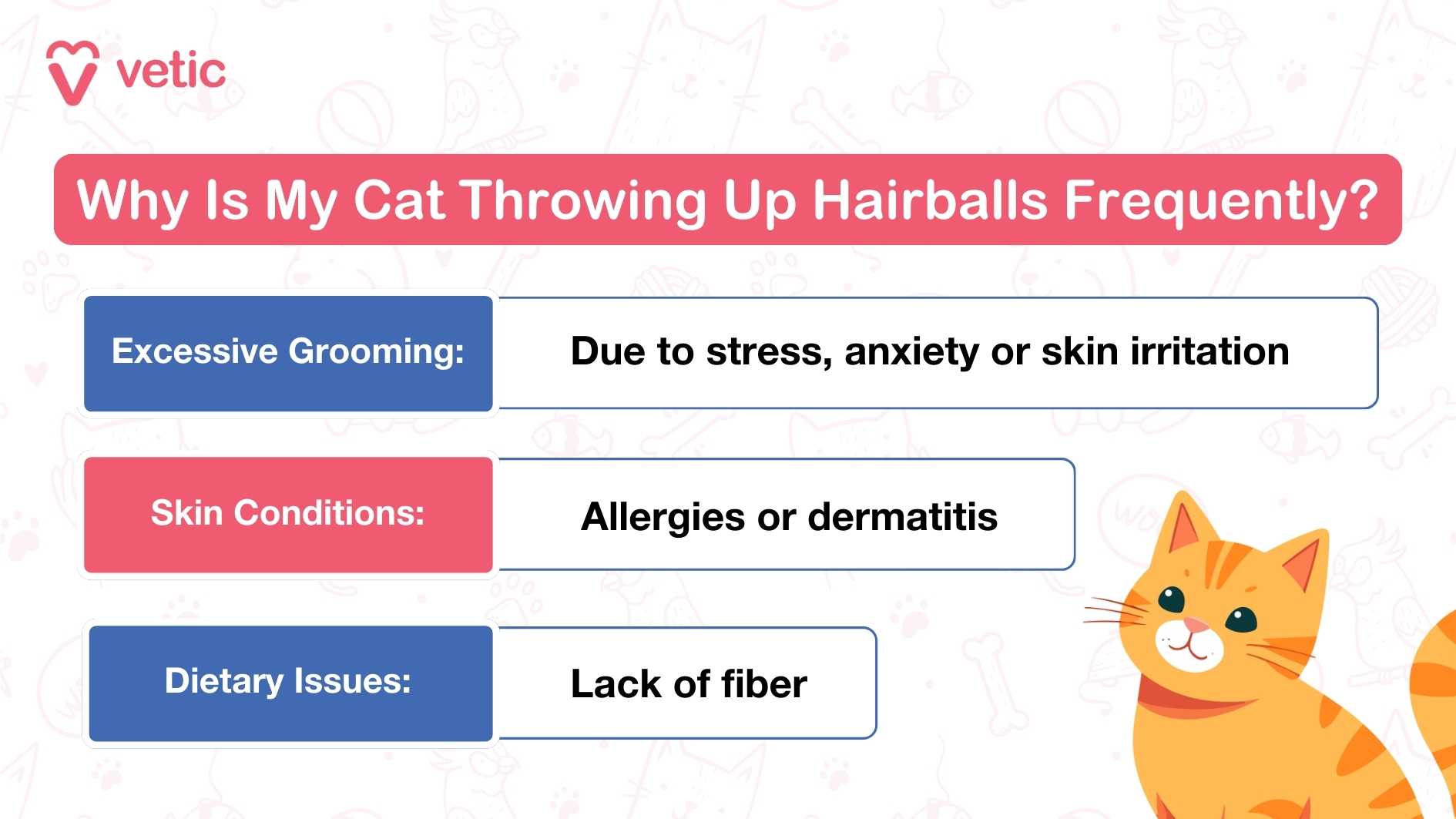
Frequent hairball expulsion may result from:
- Excessive Grooming: Often linked to stress, anxiety, or skin irritations, leading to increased hair ingestion.
- Skin Conditions: Dermatitis or allergies can cause increased shedding and grooming.
- Dietary Factors: Lack of sufficient fiber can impede the passage of hair through the digestive system.
Identifying the underlying cause is essential for effective management and may require veterinary consultation.
When Should a Pet Parent Be Concerned About Hairballs in Cats?
While occasional hairballs are typical, certain signs necessitate veterinary attention:
- Increased Frequency: More than one or two hairballs per month.
- Appetite Loss: Reluctance or refusal to eat.
- Lethargy: Unusual tiredness or decreased activity.
- Constipation or Diarrhea: Changes in bowel movements.
- Persistent Coughing or Gagging: Without producing a hairball.
These symptoms may indicate a blockage or other health issues requiring prompt veterinary evaluation.
How Do Veterinarians Treat Hairballs in Cats?
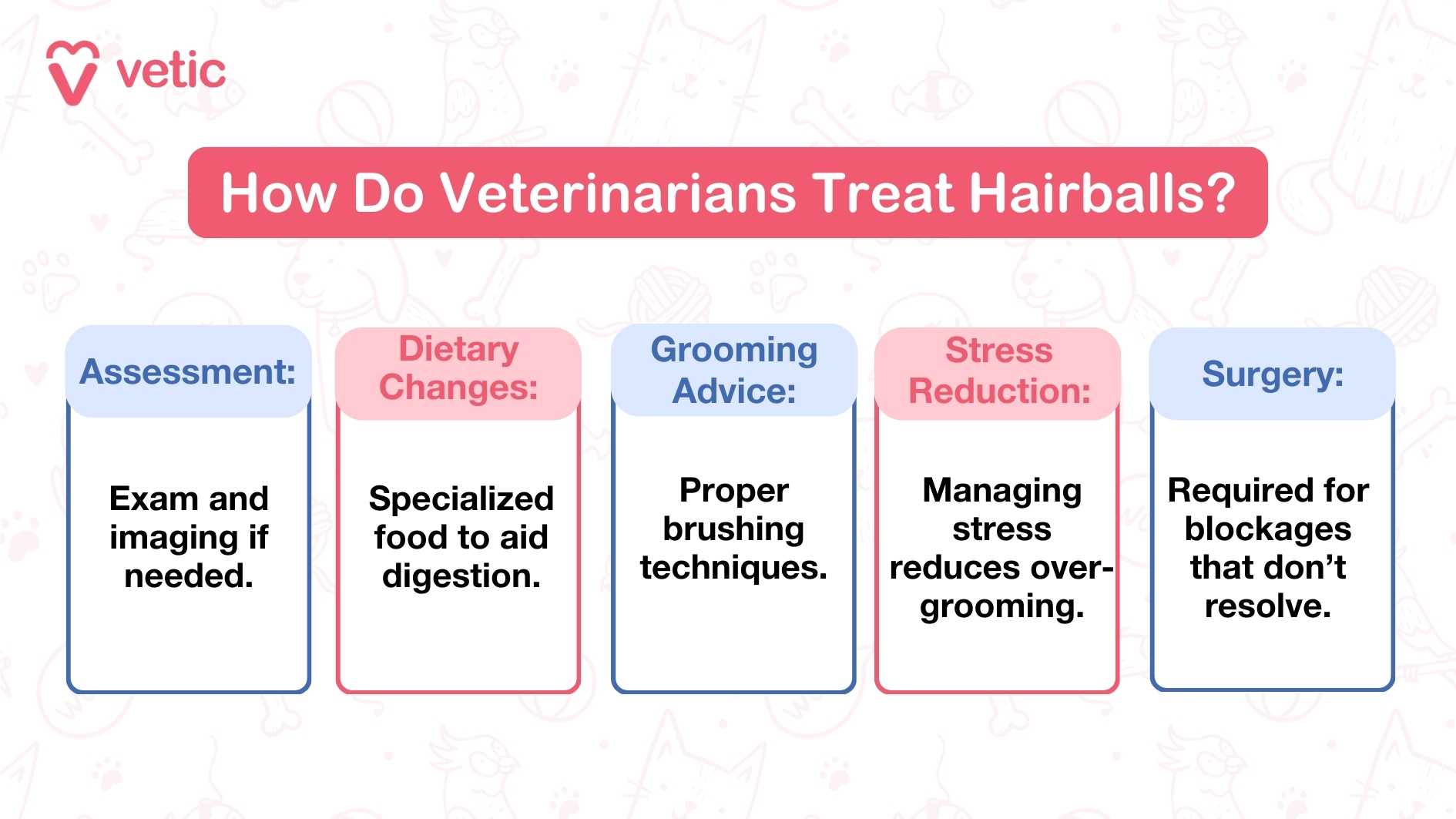
Veterinary treatment for hairballs depends on their severity:
- Assessment: Physical examination and, if necessary, imaging studies to detect obstructions.
- Dietary Recommendations: Suggestions for specialized diets or supplements to aid hair passage.
- Grooming Advice: Guidance on appropriate grooming practices tailored to the cat’s breed and coat type.
- Stress Reduction Strategies: Recommendations to minimize stress-induced grooming behaviors.
In cases of severe obstruction, surgical intervention may be required. Regular communication with a veterinarian ensures the health and well-being of your feline companion.
Understanding and managing hairballs is an integral part of responsible cat ownership. Through preventive measures and attentive care, the risks associated with hairballs can be minimized, contributing to a healthier and more comfortable life for your cat.

